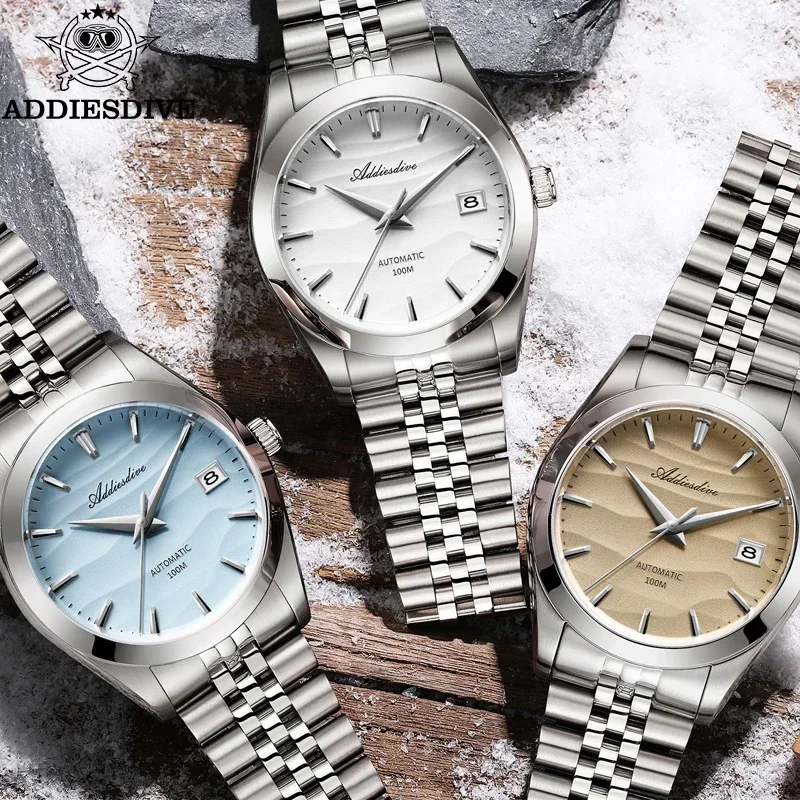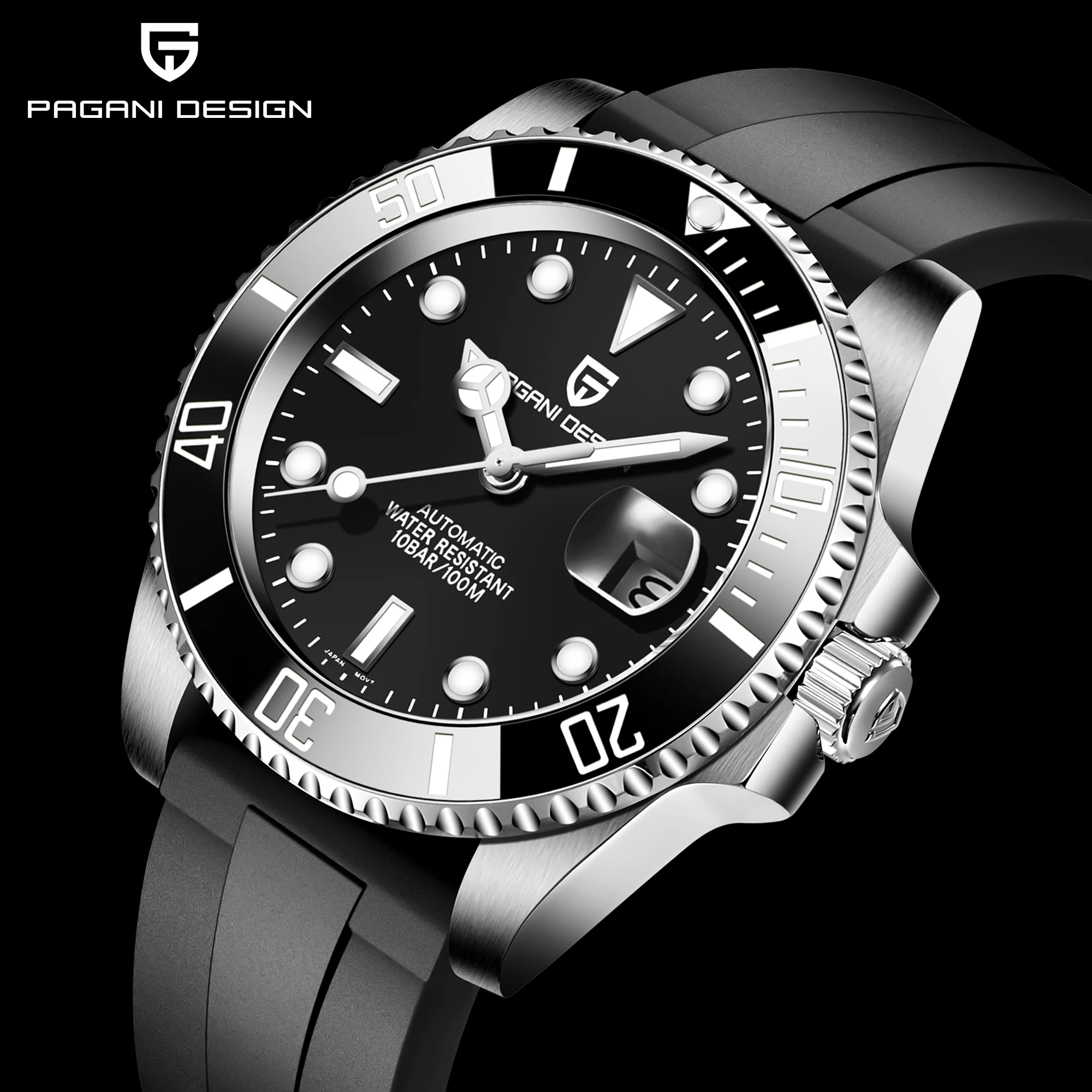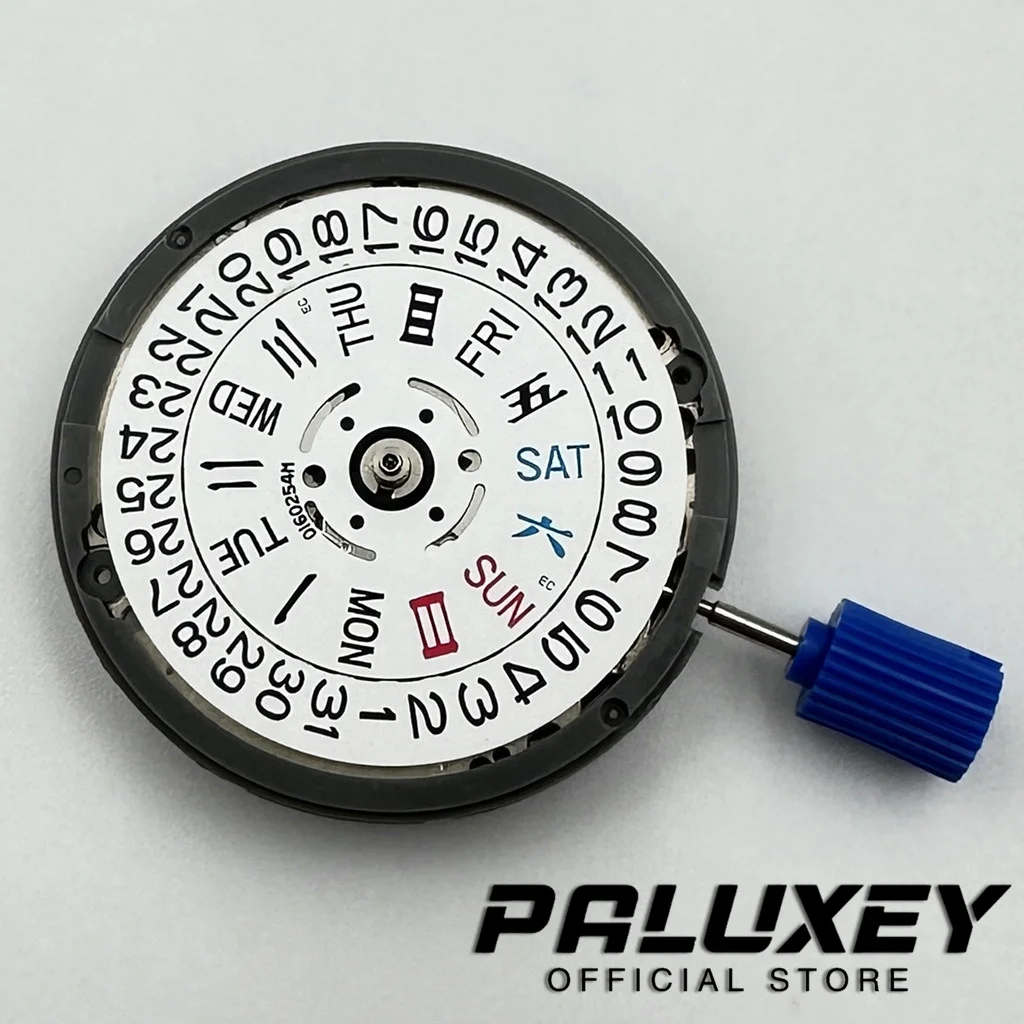Introduction: The Enduring Appeal of the Day-Date Complication
The day-date complication stands as one of horology’s most practical and beloved features—a mechanical system that elegantly displays both the current day of the week and date of the month on your wristwatch. Beyond mere convenience, these complications represent a significant achievement in mechanical engineering, requiring precise coordination of numerous components within the limited space of a watch movement.
The allure of day-date complications stems from their perfect balance of functionality and horological artistry. For watch enthusiasts, these mechanisms offer:
- Daily practicality with at-a-glance access to two essential pieces of information
- Mechanical complexity that showcases a watchmaker’s skill and ingenuity
- A testament to traditional watchmaking excellence in our digital age
- Additional value in both collectability and everyday usefulness
The integration of day-date functions into automatic movements represents a significant technical challenge, requiring approximately 20-40 additional components compared to time-only movements. Despite this complexity, these complications have remained among the most sought-after features, with surveys indicating roughly 65% of luxury watch collectors own at least one timepiece featuring this function.
Throughout this article, we’ll journey through the fascinating mechanical wonderland that makes day-date complications possible, exploring how the intricate dance of gears, springs, and discs seamlessly tracks our days and dates. From the history of dive watch engineering to the specific mechanics of modern timepieces, we’ll uncover what makes day-date automatic watches such marvels of micro-engineering.
The Automatic Movement: Power Source for Complications
At the heart of any automatic watch with day-date functionality lies the self-winding movement—the power plant that drives not just the hands but all additional complications. Understanding how this energy system works provides essential context for appreciating the day-date mechanism.
Automatic movements harness energy from the wearer’s natural wrist movements through a weighted semi-circular rotor that spins freely with motion. As this rotor rotates, it winds the mainspring—essentially a tightly coiled metal ribbon that stores energy like a wound-up rubber band. This elegantly simple system eliminates the need for daily manual winding, making it particularly well-suited for watches with additional complications that require consistent power.
For day-date complications specifically, the movement must generate enough power to drive both the timekeeping functions and advance two separate display discs at precise intervals. This requires careful engineering to ensure proper energy distribution. The typical power reserve for automatic watches with day-date complications ranges from 38-48 hours, allowing the watch to continue functioning accurately even when not worn for a day or two.
The base movement provides a foundation to which the day-date module can be attached, either as an integrated part of the movement design or as an additional module (known as a module construction). Power from the mainspring flows through the gear train, with specific mechanisms directing some of that energy to advance the calendar displays precisely when needed.
The relationship between how long automatic watches last and their complications is intimate—day-date mechanisms add complexity that requires proper maintenance but also showcases the remarkable durability of well-made automatic watches when properly cared for.
The Fundamental Mechanics: Rotating Disc System
At its core, the day-date mechanism relies on a beautifully simple concept: rotating discs that display information through carefully positioned apertures (windows) in the watch dial. These discs form the visual foundation of the complication that wearers interact with daily.
The date disc is typically a flat, circular plate with 31 printed or engraved numbers positioned along its outer edge. This disc makes a complete rotation once every 31 days, with each position precisely calibrated to align perfectly with the date window on the dial. The disc itself is usually white or matches the dial color, while the numerals are printed in a contrasting color for legibility.
The day disc operates on a similar principle but completes its rotation every seven days. This disc features the days of the week—either as full names or abbreviations—positioned at equal intervals. In multilingual models, each position on the disc contains two adjacent day names in different languages, with the inactive language remaining hidden beneath the dial.
These discs are positioned beneath the watch dial, with only a small portion visible through precisely cut windows. The alignment is critical—even a slight misalignment of 0.1mm can make the display appear unprofessional and affect readability.
The synchronization of these discs with the watch’s 24-hour cycle is accomplished through a series of gears connected to the hour wheel (which completes one rotation every 12 hours). Through careful gear ratios, the movement translates the continuous rotation of the hour hand into precisely timed jumps of the day and date discs, ensuring they advance at midnight rather than at random intervals throughout the day.
This fundamental system forms the basis for virtually all mechanical watch calendar complications, though the specific implementation varies significantly between manufacturers and movement designs.
Key Components: The Heart of Day-Date Mechanics
To truly appreciate the ingenuity behind day-date complications, we need to examine the specific components that make this horological magic possible. Each piece plays a critical role in transforming the rotational energy of the movement into accurate day and date displays.
Date Mechanism Components
- Date Disc: The numbered wheel (typically 31 positions) visible through the date window
- Date Driving Wheel: Connected to the hour wheel, it rotates once per day
- Date Star Wheel: A star-shaped wheel with 31 points that advances the date disc
- Date Jumper Spring: Ensures crisp alignment of the date in the window and prevents backward movement
Day Mechanism Components
- Day Disc: Features the seven days of the week, positioned beneath the dial
- Day Star Wheel: Similar to the date star wheel but with seven points corresponding to days
- Day Jumper: Ensures proper alignment of the day display
- Day-Night Cam: Coordinates day changes with the 24-hour cycle
Command Mechanism
- Program Wheel: The master coordinator that determines when date and day changes occur
- Finger Mechanism: Extends at specific times to engage the star wheels
- Intermediate Wheels: Transfer motion between the timekeeping parts and the calendar mechanism

The precision engineering involved is remarkable—these components must operate within tolerances of 1/100th of a millimeter (about 0.0004 inches). The gears themselves are typically manufactured from hardened brass or steel, with specialized surface treatments to reduce friction and wear. The jumper springs are made from specially tempered spring steel that maintains its tension properties over decades of use.
The day-date mechanism represents a symphony of mechanical interactions, each component perfectly timed and sized to work harmoniously with the others. This coordinated system is what enables the reliable operation that owners of day-date automatic watches have come to expect and appreciate.
The Changing Moment: Types of Day-Date Transitions
Not all day-date complications are created equal. One of the most significant distinctions between different mechanisms lies in how they handle the transition from one day/date to the next. These transition types represent different approaches to solving the same mechanical challenge, each with its own characteristics.
Gradual Change Mechanism
The most basic implementation involves a slow transition that occurs over several hours. In these movements, the date disc begins moving slowly in the evening hours, gradually revealing the next date. The complete transition might take 3-4 hours centered around midnight. This approach requires less complex engineering and puts less strain on the movement but lacks the satisfying instantaneous change that many enthusiasts prefer.
Semi-Instantaneous Change
This middle-ground solution offers a relatively quick transition that occurs over a period of minutes rather than hours. The date begins changing shortly before midnight and completes its transition shortly after. This approach balances mechanical simplicity with a more refined user experience, making it common in mid-range timepieces.
Instantaneous “Jumping” Change
The most sophisticated and desirable implementation is the true instantaneous change—where both day and date snap precisely to their new positions within seconds at midnight. This requires complex engineering with specialized springs that store energy throughout the day, then release it precisely at midnight to power the jump. The result is mechanically impressive but introduces additional stress points in the movement and generally requires more frequent service.
Each design approach reflects different priorities in the enduring importance of day-date displays in watchmaking. Higher-end watches typically feature the instantaneous change, which many collectors consider the hallmark of a truly sophisticated calendar mechanism. However, gradual change systems often demonstrate greater long-term reliability with less maintenance.
User Interaction: Setting and Adjusting Day-Date Functions
Interacting with day-date complications requires understanding how these mechanisms are designed to be adjusted. Modern automatic watches with these complications typically feature intuitive setting systems, though older pieces may require different approaches.
Crown Position Functions
Most modern day-date watches feature a crown with multiple positions:
– Position 0: Pushed in completely (winding position for manual winding)
– Position 1: First click out (quick-set date/day function)
– Position 2: Second click out (time setting function)
Quick-Set Mechanism
The development of quick-set mechanisms revolutionized the user experience of day-date watches. This ingenious system allows direct adjustment of the date or day without needing to rotate the hands through multiple 24-hour cycles. When the crown is pulled to position 1:
- Turning in one direction advances the date
- Turning in the opposite direction advances the day (in many models)
- Some watches require moving between crown positions to set date vs. day
In watches without quick-set functions (typically vintage pieces), the only way to adjust the calendar is by advancing the time through complete 24-hour cycles or rotating between 9 PM and 3 AM repeatedly, which advances the date mechanism.
For optimal functionality, most manufacturers recommend setting day-date watches following a specific sequence:
1. Pull crown to position 2 and advance time to 6:00 (away from danger zone)
2. Return to position 1 to set day and date
3. Return to position 2 to set the precise time
Following these procedures ensures smooth operation and helps protect the mechanism from damage. The essential guide to day-date watches provides comprehensive instructions for various setting systems across different watch styles.
The Danger Zone: Protecting Your Day-Date Mechanism
One of the most important aspects of owning a watch with a day-date complication is understanding the “danger zone”—a period during which manual adjustment can damage the delicate mechanism. This critical information can save watch owners from costly repairs and frustration.
The danger zone typically occurs between 9:00 PM and 3:00 AM on the watch dial. During this time window, the date change mechanism is partially engaged, with multiple components already in motion preparing for the upcoming date change. Manually adjusting the date or day during this period forces these already-engaged components to move in ways they weren’t designed to, potentially causing:
- Bent or broken teeth on the date or day wheels
- Damaged star wheels or jumper springs
- Misalignment of the day or date displays
- Complete mechanism failure requiring expensive repair
To protect your watch from damage:
- Always adjust the date and day outside of the 9 PM to 3 AM window
- If you’re unsure of AM/PM on your watch, set the time to 6:00 before making any adjustments
- If the date or day seems “sticky” or resistant when adjusting, stop immediately
- Listen for unusual sounds during adjustment, which might indicate mechanism engagement
These precautions are especially important for vintage timepieces, which typically lack the protective features found in modern watches. The advancement of diving watch innovations has included increasingly robust protection mechanisms for complications, but even modern watches benefit from careful handling during adjustments.
Display Variations: Aesthetic Expressions of Day-Date Functions
Day-date complications not only vary in their mechanical implementation but also in how they present information to the wearer. These display variations allow watchmakers to express different aesthetic visions while maintaining functionality.
Window Displays vs. Pointer Indicators
The most common configuration features rectangular or square windows (apertures) cut into the dial, through which the day and date discs are visible. These windows are typically positioned at 3 o’clock for the date and 12 o’clock for the day, though many variations exist.
Pointer date displays offer an alternative approach, using a central hand with a small arrow or crescent tip that points to dates printed around the periphery of the dial. This more traditional design evokes early calendar watches and creates a less cluttered dial appearance, though it sometimes sacrifices some legibility.
Day Display Variations
Watch manufacturers have developed numerous approaches to displaying the day information:
- Full name displays show the complete day name (e.g., “FRIDAY”)
- Abbreviated displays show shortened versions (e.g., “FRI”)
- Multilingual displays alternate between two languages (often English and another language)
- Color-coded day displays highlight specific days (typically Sunday in red, other days in black)

The typical day window measures approximately 0.2 inches (5mm) in width, requiring extremely compact printing or engraving to maintain legibility. Creating these small yet perfectly legible displays remains one of the manufacturing challenges watchmakers face, especially in watches with multilingual capabilities.
Some manufacturers have introduced creative variations, such as retrograde day displays that sweep across an arc rather than rotating on a disc, or digital displays using rotating numeral wheels. These variations add visual interest and distinguish perpetual calendar automatic watches from simpler calendar timepieces.
Supplemental: Common Questions About Day-Date Complications
Do all automatic watches have day-date complications?
No. Day-date complications are just one type of feature available in automatic watches. Many automatic watches are time-only (displaying just hours, minutes, and sometimes seconds), while others might have only a date display or completely different complications like chronographs or moon phases. Day-date complications add significant complexity and cost to a movement, so they’re typically found in mid to high-range timepieces.
What’s the difference between a triple calendar and a day-date watch?
A day-date watch displays the day of the week and the date of the month. A triple calendar adds a month indication, showing day, date, and month. Triple calendars require additional mechanical complexity to track months of different lengths but don’t typically account for leap years. A perpetual calendar goes even further by automatically adjusting for varying month lengths and leap years.
How do day-date mechanisms differ across movement architectures?
Different manufacturers approach day-date mechanics with varying philosophies:
– Swiss movements typically feature more refined finishing and often use instantaneous change mechanisms
– Japanese movements often emphasize reliability with semi-instantaneous changes
– Integrated day-date mechanisms (built into the movement) versus modular approaches (added to a base movement) offer different performance and service characteristics
Which watch types commonly feature day-date complications?
Day-date complications appear most frequently in:
– Dress watches designed for business and formal settings
– Sports watches designed for active lifestyles
– Travel watches that help maintain schedule awareness
– Heritage-inspired designs that celebrate traditional watchmaking
Moonphase automatic watches sometimes incorporate day-date functions as part of more complex calendar systems, creating truly sophisticated timekeeping instruments.
Classic Automatic Dress Watches, Day Date Automatic Watches, Perpetual Calendar Automatic Watches
Price range: $540.60 through $574.60 Select options This product has multiple variants. The options may be chosen on the product pageAutomatic Chronograph Watches, Chronograph Pilot Watches
Price range: $233.36 through $237.58 Select options This product has multiple variants. The options may be chosen on the product pageClassic Automatic Dress Watches, GMT Automatic Watches, GMT Pilot Watches
Price range: $1,240.86 through $1,463.33 Select options This product has multiple variants. The options may be chosen on the product pageAutomatic Chronograph Watches, Classic Style Dive Watches
$3,053.06 Select options This product has multiple variants. The options may be chosen on the product pageAutomatic Skeleton Watches, Open Heart Automatic Watches
$98.36 Select options This product has multiple variants. The options may be chosen on the product pageBronze Automatic Watches, Military Inspired Automatic Watches, Professional Spec Dive Watches
Price range: $1,442.21 through $1,442.82 Select options This product has multiple variants. The options may be chosen on the product page
Care and Maintenance: Ensuring Longevity of Day-Date Functions
To ensure your day-date complication performs reliably for decades, proper care and regular maintenance are essential. These complex mechanisms require more attention than simpler timepieces but reward owners with years of trouble-free operation when properly maintained.
Automatic watches with day-date complications typically require servicing every 5-7 years, though this interval may be shorter for watches worn daily or in harsh conditions. During servicing, a watchmaker will disassemble, clean, lubricate, and reassemble the entire movement, paying special attention to the calendar mechanism’s wear points.
Warning signs that your day-date mechanism might need attention include:
- Dates that don’t fully align with the display window
- Sluggish or incomplete day/date changes
- Days or dates that change at incorrect times
- Difficulty when manually adjusting calendar functions
- Unusual sounds during the automatic date change
For optimal performance and longevity, consider these maintenance recommendations:
- Avoid adjusting the date when the watch shows between 9 PM and 3 AM
- Keep automatic watches with complications on a winder when not worn
- Consider the water resistance limitations—more complications often mean more case penetration points
- Have the watch inspected by a qualified watchmaker if any function seems abnormal

For those fascinated by mechanical operations, automatic skeleton watches with day-date complications offer a mesmerizing view of these systems in action, allowing owners to observe the precise dance of components with each date change.
The day-date complication represents a perfect marriage of practical functionality and mechanical artistry—a daily-use feature that showcases the incredible ingenuity of watchmakers who manage to track our calendar through purely mechanical means. With proper care, these wonderful mechanisms will faithfully mark the passage of not just hours, but days, weeks, and years for generations.







